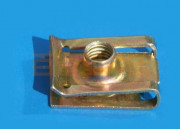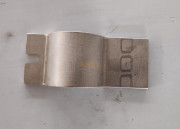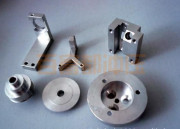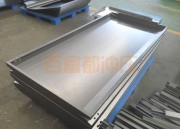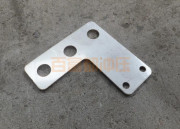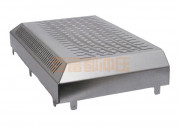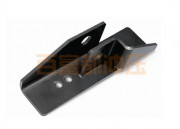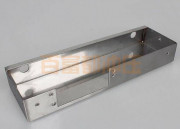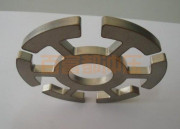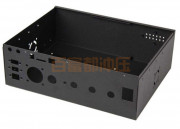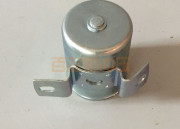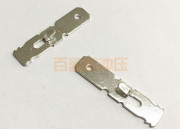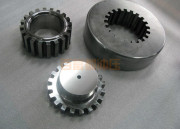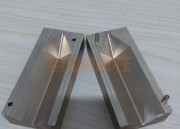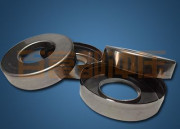Posted at 11/09/2022 By : deep drawing Categories : Blog,Industry Comment: Comments Off on Design specification for stamping die forming parts 1. The design of forming parts includes the following four aspects:
1. First of all, it is necessary to consider determining the parting surface of the movable and fixed molds. During the injection molding process, the surface that opens the mold for taking out the plastic part or the gating system is collectively called the parting surface. That is to say, the parting surface is the contact surface between the movable mold and the fixed mold, and its main function is to tightly seal the cavity. The mold designer must determine the opening direction of the mold when designing the parting surface.
2. When designing molding parts, it is necessary to consider the number of cavities and the layout of the cavities, the setting of the pouring system, the core pulling mechanism, the demolding mechanism, the design of the temperature control system, the material selection and heat treatment of the molding parts, etc. See other chapter.
3. Whether the structural form of the movable die and the fixed die is a whole or a block structure, and its structural form and size, block method, fixing method, etc., it is necessary to calculate the cost according to the specific situation, weigh the pros and cons to make the correct choose. The strength and rigidity of the mold should be paid attention to when adopting the combined block structure, see Chapter 16 for details.
4. When designing the size of the molded parts, the molding shrinkage rate of the product, the demoulding slope, and the manufacturing process of the parts should be fully considered.
5. Design molding parts according to the customer’s design standards and requirements and the technical data provided.
Second, the basic principles of mold structure design
1. Make it clear
The mold structure principle is clear, the function of the parts is clear, and there is no omission and repetition. The design of each part is required to be standardized and optimized (the design basis should be unified, the nominal size should be an integer, and it cannot be arbitrarily designed).
2. Simple
The structure is simple and reliable, easy to process and assemble, and the advantage of simplicity is that the cost is directly reduced. For example, try to keep the geometry of the parts simple, minimize the machining surface and processing times of the parts, reduce or simplify the assembly relationship and adjustment measures with the related parts (the related parts must not interfere).
3. Safe and reliable
The mold has sufficient strength and rigidity, and the continuous operation of the mold will not cause problems, which is convenient for mold maintenance
4. Maintenance
The product ejection and demolding mechanism is safe and reliable.
The molding efficiency of the products is high and the quality is good. Such as: high cooling rate, short molding cycle, and balanced pressure in the gating system. The designed mold, after the plastic part is formed, its runner and gate are easy to remove.
3. Design steps of forming parts
When designing the molding parts of movable and fixed molds, it is necessary to comprehensively consider related issues. After determining the mold structure and gating system, the design can generally be carried out according to the following steps.
1. Determine the number of mold cavities and preliminarily determine the cavity layout.
2. Determine the parting line of the plastic part and the parting surface of the mold.
3. Determine the gate form and feeding position of the gating system.
4. If there are concave and convex shapes inside and outside the plastic parts, it is necessary to design a lateral core pulling mechanism.
5. Determine whether the molded part is integral or insert, and its combination and structural fixing.
6. After the above relevant factors are determined, it is necessary to comprehensively consider the mold structure and overall layout.
7. Determine the inner and outer shape and molding size of the core and cavity, and determine the demoulding slope of the part.
8. Determine the technical requirements for the material, heat treatment, assembly requirements, surface roughness and other technical requirements of the movable and fixed mold forming parts.
Fourth, the method of determining the number of cavities
There are many ways to determine the number of cavities. The design is mainly based on the precision of plastic parts, the batch of products, the economy of production, the clamping force of the injection molding machine and the injection volume. The first is the accuracy of the plastic parts, and then other factors are considered, and the number of cavities is required to be reasonably selected. Usually, the number of cavities with high precision is at most 4, and for the number of mold cavities with low precision, it is best not to exceed 24. Because, every time the number of cavities increases, the accuracy will decrease accordingly.
Read More →

